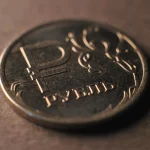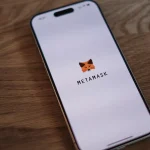
The total supply of Ethereum has grown to 120,521,725 ETH, reaching levels last seen in September 2022, before The Merge upgrade.

The metric has exceeded pre-Merge PoS and PoW levels by 584 ETH.
In the two years and 144 days since the upgrade, Ethereum’s issuance has amounted to 1,948,221 ETH, while 1,947,636 ETH has been burned.
After The Merge, Ethereum’s supply hit a low of 120,064,500 ETH in April 2024, before the trend reversed.
Jaehyun Ha of Presto Research told The Block that inflation started rising again a month after the Dencun hard fork.
The current supply dynamics challenge the narrative of Ethereum as a deflationary asset and a superior store of value compared to Bitcoin.
Before Dencun, users paid fees based on gas price multiplied by gas quantity, with a significant portion being burned.
“Dencun introduced support for BLOB transactions in Ethereum’s Layer 2. These transactions use a separate ‘blob gas’ unit, distinct from standard ‘gas’ used for regular operations,” Ha explained.
According to the expert, this change reduced the share of burned fees, as much of the on-chain data shifted to BLOB objects.
“As a result, even if network activity remains high or increases, the balancing effect that previously limited ETH net issuance is now less pronounced,” he added.
Ha emphasized that the current situation is not concerning, as transaction volume remains stable despite the sharp rise in Ethereum’s supply.
“The upcoming Pectra hard fork in March, which includes an EIP increasing both the target size and maximum limit of BLOB objects, will further drive inflation,” he predicted.
Benjun Kim of DeSpread Research highlighted user and liquidity migration to Solana amid the rise of Layer 2 networks and the meme coin frenzy.
He warned that continued supply growth could impact blockchain security in the long term, as supply and asset price are interconnected in PoS.
On February 4, a majority of Ethereum validators supported increasing the gas limit—the maximum gas allowed per block—to enhance network scalability.
In September, Web3 researcher Cygaar called for higher fees on BLOB objects to restore ETH burn rates.
Later, Ethereum co-founder Vitalik Buterin reaffirmed the network’s focus on scaling through Layer 2 solutions.








 Cryptol – your source for the latest news on cryptocurrencies, information technology, and decentralized solutions. Stay informed about the latest trends in the digital world.
Cryptol – your source for the latest news on cryptocurrencies, information technology, and decentralized solutions. Stay informed about the latest trends in the digital world.